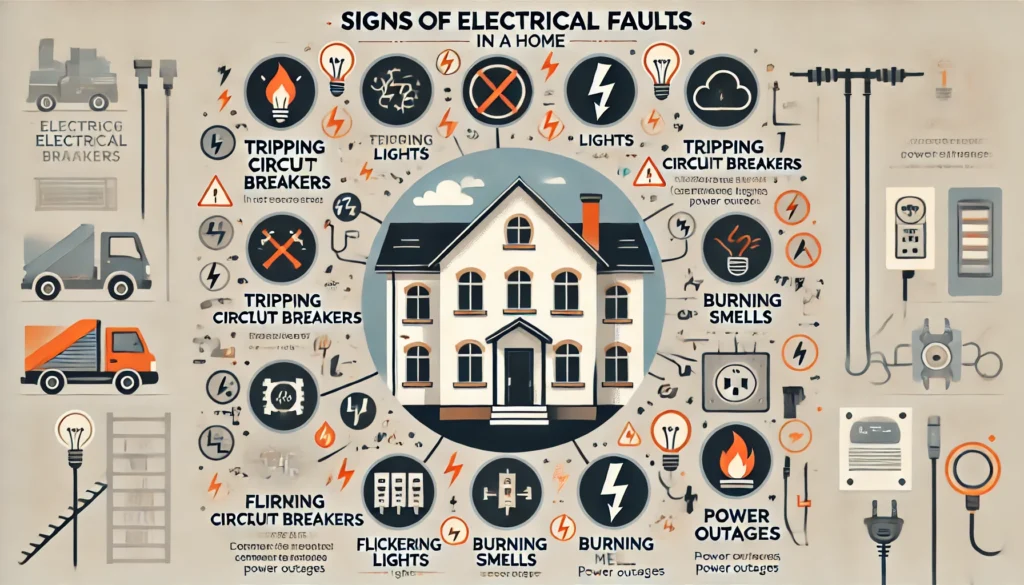Electrical Fault Finding Experts in the UK

When it comes to electrical faults, fast and accurate diagnosis is essential to ensure the safety and functionality of your property. At Madsan UK, we offer comprehensive electrical fault finding services that are designed to locate and resolve electrical issues quickly and effectively. Our team of highly trained electricians uses the latest technology to identify the root cause of any electrical fault, providing long-term solutions that restore safety and efficiency to your home or business.
What is Electrical Fault Finding?
Electrical fault finding is a crucial process that involves identifying issues within an electrical system. Faults can arise from various sources, including faulty wiring, overloaded circuits, and defective electrical appliances. These problems can pose serious safety risks, such as electrical fires and electrocution, so it’s vital to address them as soon as they are noticed.
At Madsan UK, our electricians have the experience and expertise to troubleshoot and fix a wide range of electrical faults, ensuring your property is safe and compliant with all regulations.
Signs You Need Electrical Fault Finding

If you notice any of the following signs, it may be time to schedule an electrical fault finding service:
- Frequent Tripping of Circuit Breakers: This is a common sign of an overloaded or faulty electrical system.
- Flickering or Dimming Lights: Indicates potential wiring issues or fluctuating voltage levels.
- Burning Smell from Outlets or Appliances: This can indicate overheating or faulty wiring, which could lead to more serious hazards.
- Sparks or Electric Shocks: Any sparking or minor electric shocks from switches or outlets should be addressed immediately.
- No Power in Certain Areas: Loss of power in certain parts of your home or business might signal an issue with the wiring or fuse box.
Our Electrical Fault Finding Process

At Madsan UK, we follow a systematic approach to identify and resolve electrical faults:
- Initial Inspection: Our expert electricians conduct a thorough assessment of your electrical system to identify any visible signs of faults.
- Diagnostic Testing: Using state-of-the-art equipment, we perform detailed tests on your circuits, outlets, and appliances to pinpoint the exact location of the fault.
- Fault Resolution: Once we have identified the issue, we will carry out the necessary repairs or replacements to fix the problem and ensure your electrical system is safe and efficient.
- Preventative Advice: After resolving the issue, we offer expert advice on how to prevent future electrical faults, keeping your property safe and compliant with current electrical standards.
Why Choose Madsan UK for Electrical Fault Finding?
At Madsan UK, we are committed to providing high-quality, reliable electrical services. Here’s why you should choose us for your electrical fault finding needs:
- Experienced Electricians: Our team consists of fully qualified and experienced electricians who specialize in fault diagnosis and repair.
- Latest Diagnostic Tools: We use the latest diagnostic tools to ensure accurate and efficient fault finding.
- Fast Response Times: We understand the urgency of electrical issues, which is why we offer quick response times and aim to resolve issues on the same day.
- Safety First: We prioritize safety and ensure that all repairs are carried out to meet the highest safety standards.
- Transparent Pricing: We offer clear, upfront pricing with no hidden costs.
Contact Us Today
If you’re experiencing any electrical issues in your home or business, don’t wait for the problem to escalate. Contact Madsan UK today for professional and reliable electrical fault finding services. We’re here to ensure your property remains safe and fully operational.



1 thought on “Expert Electrical Fault Finding Services | Madsan UK”
Thank you very much. Very useful information 👌